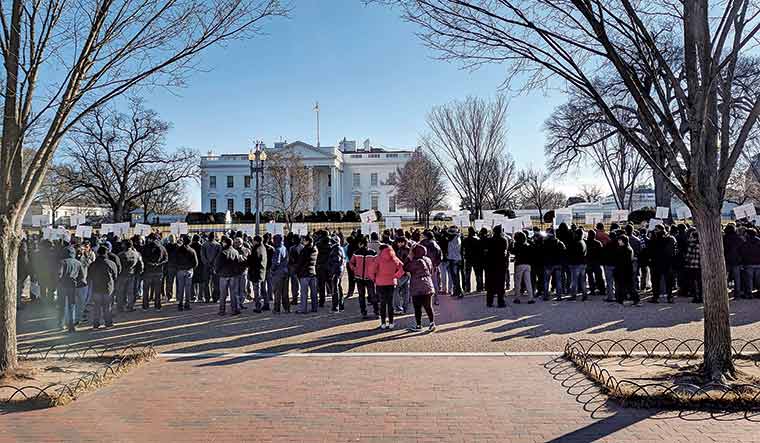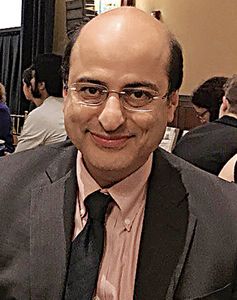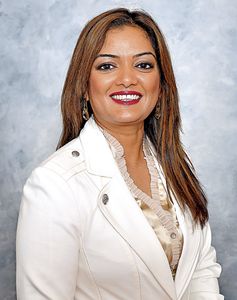Once upon a time, Yogesh, a vibrant young dreamer set out for the US on an H-1B visa with his wife and child. Now, 10 years later, he is still on the waiting line for an elusive green card. Immigration has increasingly become a waiting game, and a numbers game. The sheer math of it all is overwhelming.
There are thousands of Yogesh's waiting for their number and in Trump’s America, it may never come. “If you were born in India and you are being sponsored for a green card today, the wait time can range anywhere from 50 years to 150 years,” says Cyrus Mehta, an immigration lawyer who heads Cyrus Mehta & Partners in New York. “In terms of H-1B being denied, earlier the denial rate was 6 per cent, but in the third quarter of 2019 fiscal year it rose to 24 per cent for initial employment and 12 per cent for continuing employment.”
He points out that now when you apply for an extension of an H-1B visa, there is a risk that the case might not get approved. “What the Trump administration has done is to heighten scrutiny on the H-1B visas of qualified skilled applicants,” says Mehta. “Each time they apply for an extension, there is a risk of being denied. They have been waiting years for the green card and there is now more uncertainty.”
He cites the case of Arjun who had travelled to India to meet his parents after 10 years. He has not yet been able to return to the US because of extreme vetting. Says Mehta: “The counsellors have just held up the application for weeks and I hope this does not keep on extending, as he could be in jeopardy of losing his job.”
Mehta, who writes The Insightful Immigration Blog, says: “There are of course inherent flaws in the American immigration system. India, which is the size of a continent or even bigger, has the same country limits as a small country like Lithuania or Switzerland.” He adds that it is quite sad for the children who could age out when they turn 21 and then not be able to get a green card with the parents.
While the Congress has to fix the visa numbers allocated to each country, Mehta points out that Trump is not making it easier. Denials for H-1B petitions have been increasing steadily, from 4.3 per cent in 2015 to 7.4 per cent in 2017 and 15.2 per cent in 2019. The L-1 visa denials increased from 15 per cent in 2016 to 28.1 per cent in 2019.
Caught in the backlog are the spouses of the H-1B visa holders whose ability to work hangs in the balance. There was a new policy under Barack Obama which gave the spouses H-4 visas, which allowed them to hold jobs. Says Mehta, “There is now a proposal, or an intention to issue a rule that will rescind the prior rule. It has not yet come through, but they have announced that there is a rule in the works.” He adds that the rule is going through a final review and it is a matter of when, rather than if. “The prior rule that granted H-4 work authorisation will be rescinded,” he says.
While H-1B and L-1 visa holders worry about delays and denials, another group of Indian-Americans is also impacted—the ones of lesser means.
On the pedestal of the Statue of Liberty are Emma Lazarus’s words: “Give me your tired, your poor, your huddled masses yearning to breathe free, the wretched refuse of your teeming shore; send these, the homeless, tempest-tossed to me, I lift my lamp beside the golden door!” The Trump administration has introduced the Public Charge Rule which will make it tougher to get a green card or become a citizen of the US if you have ever used public assistance benefits like Medicaid and food stamps. Ken Cuccinelli, the acting director of the US Citizenship and Immigration Services, said that the plaque on the statue should be changed to “Give me your tired and your poor who can stand on their own two feet, and who will not become a public charge.”
Mehta says the new rule is definitely going to impact families who want to sponsor older parents, brothers and sisters. Although there is talk of merit-based immigration, Mehta says Trump’s merit-based system is a code for shutting down immigration because only a very narrow slice of people will be able to get through. “Depending on if they are younger and depending on their field they may be able to score some points, but virtually everyone else will be shut out,” he says.
Lakshmi Challa, who heads the Challa Law Firm in Richmond, Virginia, with offices in North Carolina and Hyderabad, has seen immigration cases up close for over 20 years. She says the ‘Buy American’ and ‘Hire American’ order is counterintuitive to its objective. “Jobs and immigration are not a zero-sum game that to give a job to a foreign national, [a firm] has to take it from a US citizen,” says Challa. “Also, these immigrants are not just employees, but consumers, too. They fuel the American economy, they are paying taxes, and buying homes and cars.”
The new rules are not only keeping people from coming into the US, but also has a traumatic effect on people who are already in the US, not knowing whether they are certain to get their status extended. Challa points out that the drop in visa approval rates as well as the extra adjudicatory scrutiny of returning H-1B visa holders is creating a “chilling atmosphere”.
Raj, an employee for an IT company, had been in the US for several years and had gone to India to get married. Just before the wedding, the bride’s mother died. So the couple decided to have a small temple wedding. In this noted temple, the wedding vows were not around the sacred fire, but around the shivling. The US consulate officials insisted that the wedding was invalid and he was charged with fraud for trying to smuggle in the woman.
Some cases are hardly getting off the ground; Challa mentions Shyam, an alumnus of a top university in India. His petition has been in administrative processing for over a year and a half, and inquiries have received no answers. She says: “It is a black hole. There is a lack of transparency, a lack of predictability and no defined standards unlike the past.”
For most aspiring to a green card and citizenship, the only mechanism is H-1B or an L-1 visa for which you need a multinational company behind you. This is not conducive to startups which want to come to America. Challa, who has worked with both the departments of commerce and state to try to attract foreign direct investment, feels the solution might be the E-2 Treaty Investor Visa. The E-2 is a nonimmigrant visa that allows investors from treaty countries to work in the US through their investment in a American enterprise. Citizens of over 80 countries can come to the US using the E-2. She says that it is perfect for entrepreneurs with little seed money, because they can show growth over five years.
The enterprise must be bona fide and the investment must be substantial—a significant percentage of the value of the enterprise. There is no official minimum or maximum investment amount, though the rule of thumb is that petitions for amounts less than $1,50,000 have a much harder time getting approved. Countries like Israel and New Zealand have the E visa and if India and the US could negotiate this, Challa says, “you will see a surge of Indian companies, especially ones with new technologies coming to the US, and investing, creating jobs and growing the US economy.”
In the current scenario, visa applicants should make their petitions bullet-proof, says Challa: “I always encourage everyone to think of immigration not as a mere application process, but a charting out of your strategic plan so that your short-term goals and your long-term goals are congruent. Things have become much more complicated, so we have to make sure the business outcomes and the immigration outcomes of our clients are aligned.”
Names of people whose cases are mentioned have been changed.




